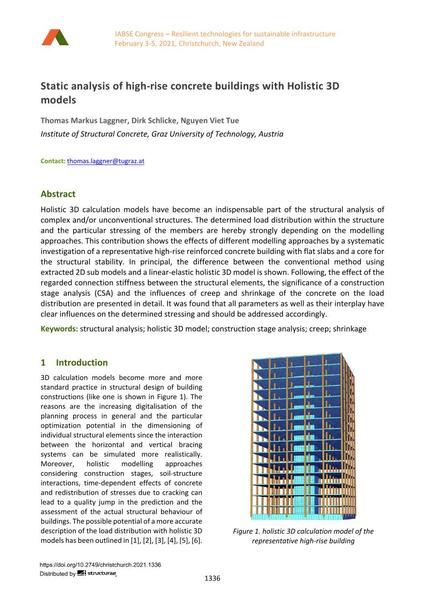Static analysis of high-rise concrete buildings with Holistic 3D models

|
|
|||||||||||
Détails bibliographiques
| Auteur(s): |
Thomas Markus Laggner
(Institute of Structural Concrete, Graz University of Technology, Austria)
Dirk Schlicke (Institute of Structural Concrete, Graz University of Technology, Austria) Nguyen Viet Tue (Institute of Structural Concrete, Graz University of Technology, Austria) |
||||
|---|---|---|---|---|---|
| Médium: | papier de conférence | ||||
| Langue(s): | anglais | ||||
| Conférence: | IABSE Congress: Resilient technologies for sustainable infrastructure, Christchurch, New Zealand, 3-5 February 2021 | ||||
| Publié dans: | IABSE Congress Christchurch 2020 | ||||
|
|||||
| Page(s): | 1336-1343 | ||||
| Nombre total de pages (du PDF): | 8 | ||||
| DOI: | 10.2749/christchurch.2021.1336 | ||||
| Abstrait: |
Holistic 3D calculation models have become an indispensable part of the structural analysis of complex and/or unconventional structures. The determined load distribution within the structure and the particular stressing of the members are hereby strongly depending on the modelling approaches. This contribution shows the effects of different modelling approaches by a systematic investigation of a representative high-rise reinforced concrete building with flat slabs and a core for the structural stability. In principal, the difference between the conventional method using extracted 2D sub models and a linear-elastic holistic 3D model is shown. Following, the effect of the regarded connection stiffness between the structural elements, the significance of a construction stage analysis (CSA) and the influences of creep and shrinkage of the concrete on the load distribution are presented in detail. It was found that all parameters as well as their interplay have clear influences on the determined stressing and should be addressed accordingly. |
||||
